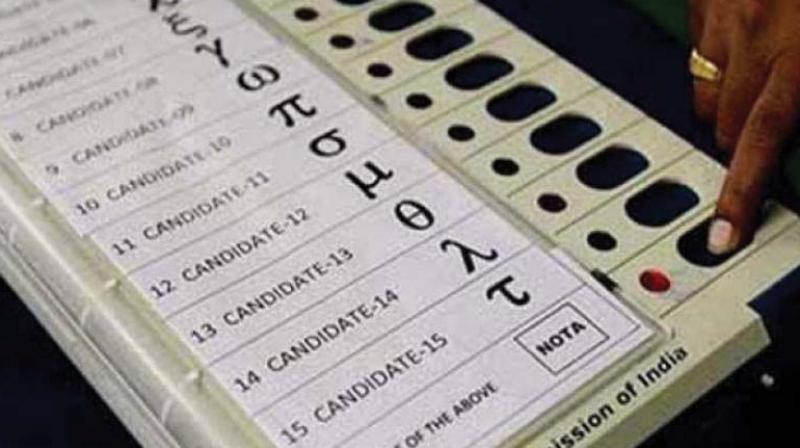Opposition in a disarray: Fresh template needed
The 2019 election results have been a bolt from the blue and have caught the opposition parties unawares.

The 2019 election results have been a bolt from the blue and have caught the opposition parties unawares. They are in a disarray not sure what to do next. Their intra-party fault-lines and the chasms among friendly opposition parties are emerging fast. BSP and SP have fallen apart. Congress internal dissensions are raring their heads in many states. Congress and RJD in Bihar, and Congress JMM in Jharkhand have many feuds amongst them to quell. The Left is clueless. The South Indian opposition parties are not sure of the extent of conflict they can manage to have with the ruling party at the centre. TMC in Kolkata is having mini implosions, and so are regional parties in Kashmir and Northeast.
Even several states facing assembly polls in less than a year, there is confusion writ large everywhere (elections to the assemblies of Delhi, Bihar, Haryana, Maharashtra, Jharkhand and Jammu & Kashmir are all within the next ten months).
However, the largest democracy of the world, which had fairly a good track record of multi party democracy, albeit with Congress dominance in the past and BJP today at the Centre, cannot afford not to have an effective and strong opposition. But the opposition politics of the near future cannot run on the premises of the past political idioms.
The past caste-based alignments are on a decline and parties like BSP, SP, RJD, and JDU cannot be caste contractors in politics any more. The vote bank politics of minority appeasement of TMC and at times by the Congress is not yielding any outcome like in the past due to counter majoritarian alignment of the electorate. The Left is bereft of issues, youths and organization across the nation, except for some venerable elders and their lofty ideals. The family based parties like NCP, NC, PDP, Shiv Sena, and Akalis have no strong reason to survive as their constituencies and ideologies are either appropriated by centrist Congress or rightist BJP. Shiv Sena, Akalis and JD(U) are part of the ruling dispensation at the centre for the moment. amidst volatile relations. Dynastic parties like DMK and TRS have succeeded this time purely due to local reasons. AAP is still finding its feet and Delhi polls ahead will determine its future.
To resurrect the opposition in India, here are five overarching suggestions, if only the opposition parties listen to them.
Congress Resurrection:
First, all former Congressmen (and women) need to unite if Congress has to be a major force to reckon with. Hence, TMC, NCP, YSR Congress etc must come on one platform if they have to build up a strong front against the BJP led Sangh Parivar government. The first experiment of this can be in Bengal and Maharashtra where the current and former Congressmen are both on the back foot now. There is absolutely no rationale on ground for Congress, TMC and NCP to run separate parties and harm one another continuously in elections. YSRCP can wait to see the outcome of a possible Congress realignment in Bengal and Maharashtra.
A strong centrist party at the national level is an essential political force to keep competitive multi-party democracy alive in India. A visionary and collective Congress leadership, led by Rahul Gandhi, but not necessarily as party president, can do so. While the party can have a Presidium, Rahul needs to embark upon a national tour to bring all Congress groups and people together based on an alternative vision of India, which focuses on secularism, social justice and inclusive development.
Federal Front of Regional Forces:
Secondly, the Janata parivar, or whatever is left of it, like JDU, SP and JDS need also to unite, and operate broadly in alliance with Congress at the national level. They may bring BSP, DMK, TRS, NC, PDP, AAP, NPP, MNF closer too and raise a Federal Front which also has its need in India. India has a myriad of regional aspirations. Last half a century has shown that regional p0litics work as a bulwark against secessionism. Allowing local leadership and aspirations to flourish finally contributes to the strength of federal India. Both Congress and BJP have undermined the national integration potentials of the regional forces. By nature, such forces shall be centrist in their positioning.
Left Rationale of Movements:
Thirdly, the nation, with one-third of its population as agricultural labourers and workers in organized and unorganized sectors, also needs a strong Left force. Hence, all left forces should unite as one single force or party as they have outlived their past differences and leadership clashes. The Left is staring at a total oblivion unless it reinvents itself as a united force of mass movement on basic issues of life and liberty of the people at the grassroots. Communist and socialist named organizations hence need to come closer and combine their strengths and outreach. The European & Latin American politics of the day have also shown that the Left perspective on politics is a necessity in times of crisis of capitalism.
Electoral Reforms:
Fourthly, there is an urgent need of electoral reforms, and a thorough one at that. The credibility of the Election Commission, electoral process and EVM machines has been grossly eroded in 2019. Even if EVMs are used, it needs a redefined SOPs with checks and balances. If not possible to have error-free EVMs, return to the ballot paper as in Europe may thus be needed. However, electoral reforms are needed in every sphere, going beyond the EVMs: banning multiple seat contesting by the same person, defining maximum possible expenditure limits, party and candidate expenditure clubbing together, RTI applicability on parties, transparent sources of funds, women's reservation legislation, educational qualification conditions, noting criminal cases against candidates, state funding of polls, possibilities of right to recall, preventing abuse of government resources in elections, giving more teeth to the Model Code of Conduct, and the like. Without a comprehensive legislation on electoral reforms in the country, the next phase of participative democracy will not emerge, evolving from representative democracy with time-lapses as on today.
Shadow Governments:
Sadly, Indian polity does not show up alternative vision of governance while the government is in action between two elections. For example, the current government has proposed a new National Education Policy for India, which is due for above two decades now. But we do not have any idea of an alternative centrist educational vision or that of the Left forces focusing more on public expenditure and public education. Every ministry of the government (central or state) should have shadow ministers from the opposition (ideally the centrist, the federal and the Left shades of opposition) who put forth their alternative views and there is an informed choice or opinion for the citizens. Most politicos are ignorant of nuances of issues in governance, and ministers depend heavily on their bureaucrats who work with their own multiple pulls and pressures. Today there is no external alternative to policies and measures by forces in the opposition. That exposes a poverty of our polity, unlike UK, where the opposition has its Shadow Cabinet which also tells the nation their perspectives on each of the government's measures and policies.
These five steps may resurrect the Opposition in India; or, as we are aware, power corrupts, and absolute power corrupts absolutely.

